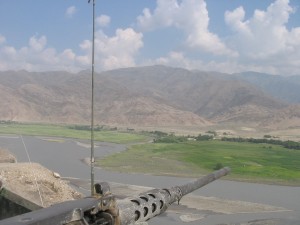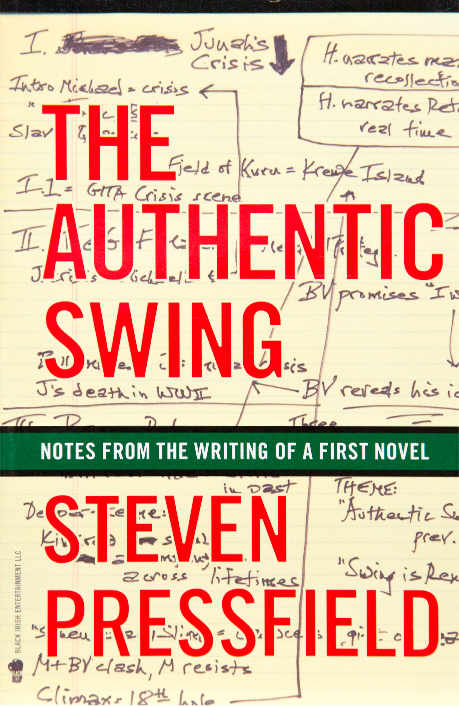Size Matters, continued

If a Tribal Engagement Strategy (TES) were to be tried in Afghanistan, how exactly would it work?
Last week, in the first part of this “Size Matters” post, we spoke with Maj. Jim Gant about the optimal size for a single U.S. Tribal Engagement Team (TET)—that is, the tactical unit that would be attached to a single Afghan tribe. Maj. Gant strongly advocated the position that smaller is better. Six to twelve men, no more.

"The Security Plan would be very well rehearsed and executed many times with the tribesmen taking the lead."
There is [Maj. Gant says] what I call an “acceptable level of integration.” It is something that can be hard to determine unless you are on the ground with the tribe daily. At the tactical level too many soldiers in a tribal area can cause major disruption of the daily life of the villagers. It can also bring a fight to the tribe that otherwise would not have been there. With a full platoon of soldiers, who more than likely will set up some type of mini-fire base, walking around in body-armor and helmets, the tribesmen and their families will quickly become alienated by the American presence. At the strategic level, too many troops and we become “occupiers.” What we are after at the tactical level is cooperation without dependence.
SP: Someone reading this Q&A might say, “Yeah, those small numbers sound great in some little village that is peaceful, but what if you guys get into really serious trouble? What if the enemy comes after you in force?”
JG: I have put more thought into this than any other tactical question. As in any military mission, security is the first and most important task. Now, in this case, the task is daunting as hell, since the consequences of being unable to accomplish security would be catastrophic. In some cases small units are able to overcome lapses in security with overwhelming firepower. A TET will not be able to do this. I will not get into the specifics here, but believe me when I say the planning prior to the mission being conducted, coupled with the extreme steps that would be initially executed on the ground; no enemy force would be able to walk into your area in the middle of the night and cut your throat while you were asleep. That just would not happen. Period.
Now, in the case you describe above, let me emphasize a few things. First, the TET’s immediate and most critical task would be to establish security. Everything the TET did for the first 90 days (an estimate) would be in relation to security–security for the TET and security for the tribe. This security would be layered and have depth as well as reach. It would consist of early-warning systems and intelligence fusion that would allow the TET to use the U.S. intelligence assets it would have at its disposal, and fuse these with the incredible human intelligence systems that are already established on the ground by the tribe. The situation that occurred recently up in Nuristan was extreme and tragic with U.S. soldiers fighting for their lives. I was not there and do not know the specifics of the situation, but I do think that they were in Combat Outposts (COPs). A TET’s circumstances would be completely different. Think about it. The enemy would have to mass and then attack an Afghan village, and would have to kill many Afghan tribesmen in the attack.
It is not as if the TET would be the only personnel there with weapons. As I pointed out, I would infil with weapons and ammunition on Day One. This is for several reasons. One, as a “gift of honor” to the tribal chief. Two, as a show of commitment and trust. And three, so there will be tribesmen with guns and ammo to help protect themselves, their tribe and us.
Here again, we circle around to the main point of the whole premise of the power in a TES. It is about building relationships. The head tribesman and his fighters will not allow us (the TET) to be harmed. Your earlier posts “Gifts of Honor: A Tale of Two Captains” and “A Tale of Two Captains, Part II,” tell the story of Sitting Bull [the tribal chief, Malik Noorafzhal, with whom Maj. Gant and his Special Forces team, ODA 316, worked in Konar province in 2004] receiving the letter from my father.
I had asked my father to send him a knife with “Sitting Bull” engraved on it—and a letter, man-to-man, father-to-father. Here is part of it:
My son says you are a great warrior. He respects you and considers you to be his friend. He tells me that your enemies are his enemies. He says he would give his life to protect you. Be my son’s father while he is in your country. Take this gift from us as a token of our friendship.
After I read the letter to Sitting Bull, he replied:
“Tell your father not a hair on your head will be harmed as long as you are with me, you are now my son.”
It’s all about relationships!
SP: Major Gant, if you could design an overall Tribal Engagement Plan, what sort of fires and forces would you deploy in reserve and what would their role be in relation to the TETs who were actually living with the tribes? Would ‘big army’ run patrols or operations? Would they serve as a Quick Reaction Force to back up the TETs? How would you envision the optimum situation?
JG: That ties into the above question. The overall security would absolutely have Close Air Support (CAS) planning considerations. Worst-case scenario, the TET could get air coverage in six hours, four hours or whatever, which will then be plugged back into the TET’s overall security plan. The TET would know long in advance what size and type of Aerial Quick Reaction Force was available, with worst-case scenario times for them as well. This information would once again be plugged back into the overall security plan. In the end, what the TET would come up with is a security plan that says we know we have to hold them off for (fill in the blank) amount of time before we can get any CAS, and we must hold them off for (fill in the blank) amount of time before U.S. soldiers are hitting a pre-planned HLZ (Helicopter Landing Zone) off-loading troops. Yes, securing an HLZ would be part of the plan. This security plan would be very well rehearsed and executed many times with the tribesmen taking the lead in the fight for their villages and tribal area.
On a larger scale, my paper “One Tribe At A Time” discusses that what I am trying to accomplish with the TET, in relation to everyone else outside the tribe, is synergism. The “battle space owner”—meaning the main-force U.S. unit and its commanders in whose AO (Area of Operations) the TET is working—would have to be completely aware and support what the TET was trying to do. The TET would draw in all the other units in the area to help support the goals of the tribe, while also supporting the goals and objectives of the other Coalition Force units in the area, as well as looking for every opportunity for the district, regional, and central governments to aid the tribe, or for the tribe to aid the government.
Just a couple of days ago, I spoke with a trusted friend who is Special Forces. He pointed out the importance of building systems within the tribe that will be able to accept outside help if and when it comes—whether it is from the government or NGOs. It would also include close contact with the Ministry of Tribal and Border Affairs to help facilitate concerns and grievances. To the point of the question, ideally the tribal area would be turned into a Joint Special Operations Area (JSOA) or what I think they now are calling an “Operations Box,” where everyone and anyone who wanted to pass through the area, with either land or air forces, would have to get approval from the TET on the ground. This may seem extreme, but think about a main-force U.S. unit conducting a raid on a tribal elder based on bad intelligence (it DOES happen). Then what? We lose 15 months of relationship and capacity building overnight. Think about the ramifications of a 500-pound bomb being dropped on the tribal leader’s daughter’s home, killing her, her husband and their four kids. The TET could end up hanging from ropes in the village square. That tribal area would have to belong to the TET. “Special trust and approval” would have to be used when dealing with the TET and supporting them in determining what types of operations could and could not be conducted in their “OP Box”.
SP: It’s clear from the newspapers that President Obama is getting close to making his decision about whether or not to give Gen. McChrystal the additional troops the general has asked for—or possibly choosing to send some fraction, half, two-thirds, whatever. If a TES is implemented—even as a pilot program, an experiment in one or two provinces, or part of a single province—how do you think that would impact the need for further American troops?
JG: I know this: If General McChrystal thinks we need more troops, then we need more troops. To fight the war in Afghanistan under the same type of COIN model that has turned out to be successful in Iraq (although comparing Iraq and Afghanistan is very dangerous), there must be more troops. But I also believe that a seriously-applied Tribal Engagement Strategy will free up some of the troops that the generals need in other places, doing other things. One of the reasons I believe it is so attractive is that it is an “economy of force” mission with Afghans taking the lead from Day One.
General McChrystal recently said, “. . . this fight is for the Afghan people, it’s not with the Afghan people. It’s to protect the Afghan people. And so I think, that has to be foremost in how we operate.” I believe that this Tribal Engagement Strategy, with the use of small, well-trained U.S. teams, will not only meet the General’s intent, but will help provide the basis for long-term “success” in large portions of Afghanistan.




Dear Jim Gant, – Thank you for the gift of your ebook – One Tribe At A TIme and To Steven Pressfield who somehow got it out on a network that reached my small world.
Until your book and now reading this blog, I have always felt hopeless about anything to do with the middle east conflicts, – Afghanistan in particular as Canada has some role there. I am one of the masses who shrugs off that part of the news as too removed from me. However, you changed that with your publication. I now actually listen with great interest to that part of the news when Afghanistan is mentioned.
Your perspective is encouraging as it appeals to my belief in an interconnected world, a world view that ours is not the only way; and that through a mutual respect for each others cultures integrated in our actions, we all benefit. It’s so easy to have that philosophy but another to live it within the container of a western approach. To carry this most integral perspective of ‘One Tribe At A Time’ and balancing it with the culture and values of the west and it military approaches is most heroic of you. You have given me a way to be interested in, care about and understand what is going on and I thank you. My hope is that like me, the masses catch on to your ideas, and our collective thinking helps all of us ‘over there’ accomplish peaceful outcomes.
With appreciation
Carolyn Winter
Carolyn,
I am currently in transit…I am going to answer your post in detail…but for now, know this: It is all about relationships…Seek first to understand and then to be understood…Yes, it is true that sometimes in our (the military) world, it is a gun that determines the outcome. However, when we begin to truly analyze what is happening and why…sometimes, the answer is far removed from what we believe it to be. There are a lot of bad people in this world who need killing. There are just as many who need to be listened to and understood. And for the record, that is not an easy thing to do.
I will answer you in more detail soon.
Thank you for your post and kind words…
STRENGTH AND HONOR
Jim Gant
Carolyn,
I read something you wrote today – it hit a chord with me and I would like to share something with you that I don’t want to post…if you could send a work email or whatever to [email protected] I will contact you.
Passion…everything that is great…is in one way or another tied up in passion. It is the difference between good and great.
I enjoyed reading your article on-line today!
STRENGTH AND HONOR
Jim
MAJ Gant-
I shared this with a friend of mine (and coinidentally a former UW student of yours). He reminded me that SOTF 22 is currently conducting a program called the Civilian Defense Initiative (CDI), which is relatively similar to the TES. If I’m not mistaken, it’s less than an AOB working on the program.
I wanted to know if you have worked with CJSOTF-A on the CDI/TES at all. Also, does the small CDI meet your vision of how the TES will be implemented early on?
Regards,
Andy
MAJ Gant,
“There are a lot of bad people in this world who need killing. There are just as many who need to be listened to and understood. And for the record, that is not an easy thing to do…” I can’t tell you how much I enjoy hearing truth spoken by those who are unashamed to say it. Thank you for your candor and taking the time to educate.
This was very interesting but here is my main worry:
He assumes that the old tribal structures exist the same throughout Afghanistan. Unfortunately, they do not. There are several areas where the local strongmen (or warlord/commander – whatever you want to call them), instead of the tribal hierarchy exist. This type of one on one engagement is impossible with the strongmen. In many districts, the issue is with the local strongmen and not really the Taliban/Al Qaeda. The locals cooperate with the Taliban because they offer protection from the local strongman. Check out some of the reports by TLO, Asia Foundation’s recent survey and CAPs
We have this same problem with jirgas and shuras in the judicial sector. Jirgas and Shuras are not inherently bad but the problem is the corrupt actors within them who do not want justice.
This is the same with engaging or re-arming tribes. Most of the corrupt actors were not disarmed in the first place and have little inclination or incentive to assist in stabilization activities. Giving them more power, access to guns and authority will not make these strongmen (or their followers) more helpful or willing to assist in stabilization.
I think this may be a good idea in some places but am concerned that the U.S. Government and allied forces do not understand that this project cannot be applied everywhere. The lack of involvement of credible and just local counterparts are integral to the success of these types of projects.
I’ve seen numerous instances of good projects being manipulated by smart local counterparts who really just want to use the authority (gained from being allied with the westerners) to get bribes and make themselves stronger.
I speak as one without the military experience but one who has significant on the ground experience in Afghanistan (and as an Afghan-American).
Asiyah,
Thanks for posting on the blog.
I thought I had made it very clear that “tribal engagement” in any form would not be a “cookie cutter” event. What works with one tribe may not work with another. I will take that one step further and say, just because it worked yesterday with tribe X doesn’t mean it will work today. There will be cases where the success of the TET is completly related to how well the team leader and the tribal chief can get a true relationship. In other words TET #1 may fail at tribe a but TET#2 may come in and be extremely successful.
Also as I point out in my paper, “warlordism” is a problem…however, we need to be careful about using that word with every individual who has power and guns that we don’t like. Is the person an “environmentally induced leader” in other words someone who is filling a vacuum for some service or need, for instance – security.
There is corruption everywhere, but once again…define that for me. Define that for Malik Noorafzhal. Define that for President Karzai. Define that for Mullah Omar. I will agree that it is extremely difficult at this point to try and tie very much into the central government, however, it is being done with varying levels of success throughout Afghanistan right now. I have also recently read that “we” are going to take more steps to ensure corruption is not taking place…I don’t know what that means…
We have very smart, savvy people out on the ground right now who we can trust to work this…and determine “who is who”…in the difficult environment that is Afghanistan. Because remember – it’s always about relationships
Thanks again for posting.
STRENGTH AND HONOR
Jim Gant
[…] One Tribe at a Time #7: Size Matters, continued […]